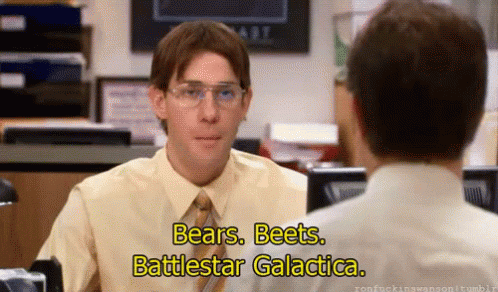The Journey of a Lifetime: One Man’s Cycle to Break the Cycle
Want to know what cycling 6,000 km in 45 days does to the body? For us, it’s a thought experiment. For one man, it’s soon to be a reality.
The appropriate words to describe Dublin-native Cormac Ryan don’t readily exist. I’ll let you interpret that one whatever way you like. One thing that can be said, however, is that he’s certainly lived a lot of life in his 28 years on this planet.
A life-threatening heart condition, resultant struggles with his mental health, and a clinical eating disorder are things all of us would struggle to deal with in isolation, but Cormac was somehow dealt them all. Not to mention the fact that he’s put up with my friendship for almost a decade now and still hasn’t had the sense to cast me adrift.
The annals of Cormac’s past have already been detailed by far better writers than me, so that’s not what I want to do. Instead, I’d like to look to his future. This May, Cormac will attempt — and undoubtedly succeed — to cycle 6,000 kilometres from San Francisco to New York over the course of 45 days, entirely solo.
The reasons behind this massive undertaking are far-reaching and complex, but to quote the man himself, “it’s about awareness and education.”
“My eating disorder very nearly broke me. Now that things are brighter, I want to be the voice for both men and women who are not yet strong enough to have their own. I want to help you all understand us better. Most of all, I want to show that a fulfilling life is possible despite the struggle that an eating disorder brings.”
A noble cause indeed.
With Cormac’s impending journey in mind, I wanted to try my best to raise awareness and to educate in the way that I know best — through science.
With that in mind, let’s take a look at how a 45 day, 6,000 km cycle will impact the human body and what Cormac will have to undergo to emerge victorious against the adversity of the open road.
Oh, and the bears…did I mention the bears? There’s going to be bears.
Physical Toll of a Cycling 6,000 Kilometres in 45 Days
Would you believe, it’s difficult to find scientific studies that examine the effects of exactly what Cormac is trying to do — so I’ve had to get creative. A lot of the research cited here will discuss ultra-endurance events and long-distance cycles such as the Tour de France. Will Cormac look to compete for the gold jacket after this cycle? Who knows, but it’s the best we have to go off right now.
Now…let’s look at just how this cycle will physically affect his body.
Heart Rate
Exercise makes your heart race, and cycling is a great way to really get your ticker going. A heart rate in excess of 140 beats per minute (bpm) is going to be a common occurrence. This is to provide adequate oxygen to the working muscles primarily in the legs. During particularly tough climbs or mountainous regions this could increase to over 180 bpm. Altitude will make oxygen less readily available, further exacerbating the work the heart has to do.
Dehydration
Contracting muscles produce heat and raise the temperature of the body. Luckily, we have a natural way to help cool off — sweat. Unfortunately for Cormac, he could be set to lose up to 1.5 litres of fluids an hour at the extreme, which will need to be replenished. Also unfortunate for Cormac is the fact that he has to carry all of his equipment himself — it’s a solo trip after all. That means always making sure he has adequate water with him to ensure dehydration doesn’t take its toll. Dehydration can set in slowly and quietly, but it can cut performance in half if you’re not careful.
Energy Demands
Racing cyclists can burn between 6,000 and 8,000 calories in a five hour cycling session per day. This type of energy demand requires enormous amounts of fuel in order to keep going. Carbohydrates are crucial to performance with energy gels, bars, and drinks all on the menu each day. A failure to fuel properly is one of the most common reasons for poor performance amongst endurance cyclists, so immense care will need to be given to ensuring Cormac remains on top of his game.
Weight loss
When we look at the Tour de France, you may be surprised to hear that very few of the riders involved actually lose much weight throughout the course of the gruelling three weeks. There are reasons for this though. A 2012 review showed that teams are stuffing their riders with up to 6,000 calories per day in order to keep their muscle mass intact. Forty five days multiplied by 6,000 calories would add an awful lot of weight to Cormac’s back. He may have carried the heavy burden of my friendship for many years, but that seems to be a step too far.
On top of this, Cormac also won’t have a team with him to manage things like post cycle feeds. Over the course of his cycle, its likely that he could see an initial spike in weight due to an increase in stress hormones like cortisol causing fluid accumulation, but without perfect nutrition this weight could begin to slide as the days wear on.
Immune system demands
While exercise has notable positive effects on the immune system, prolonged intense exercise over a few weeks can actually weaken our immunity. The blood’s germ-killing lymphocyte population depletes with no chance for replenishment, leaving the body vulnerable to infection. Add in dust and dirt being inhaled while on the road, and an upper respiratory tract infection becomes likely. And, would you believe, being able to breath properly is quite important to an ultra-endurance cyclist. Who would’ve thought?
Bone issues
Cycling is a non-weight bearing form of exercise. If it’s done right, your feet should literally never touch the ground. This creates an interesting situation whereby the muscles of the body are working extremely hard but the bones are actually under very little stress. Cyclists' bone densities are typically already lower than most other athletes.
This is why incorporating weight training and running into his preparation has been so key for Cormac. By increasing his bone mineral density he can avoid any potential issues post cycle. As he sweats — and boy will he sweat — Cormac will lose important minerals such as calcium and potassium. There’s little he can do during the cycle to help this, so preparation is everything.
Saddle Sores
Ask any excitable new cyclist about how debilitating a saddle sore can be and I’m sure you’ll see plenty of squirming as painful memories come flooding back. While consistent training can certainly help your backside “toughen up,” there’s simply no replicating the real experience of cycling that far every single day.
The slightest shift in posture to relieve some pressure on a long ride and next morning you could be dealing with a sore that could derail the entire trip! That’s why having correctly fitted equipment is important. Every millimetre counts here.
Bear Attacks
Here it is, the moment I’m sure you’ve all been waiting for. Was I joking about the bears in the intro? Was it all just a hook to get you to keep you reading?
No.
I never joke about bears.
Cormac’s route is poised to bring him right through the heart of America’s black bear country — and as any U.S. Office aficionado’s will tell you — they’re undoubtedly the best bear. They’re also potentially one of the most dangerous. They typically live in less open spaces than their brown-furred counterparts. With sudden encounters being one of the most common reasons for a bear attack, this could be problematic…especially when you’re whizzing around on a bike.
Cormac has had to take genuine precautions and make specific plans to minimise the threat he faces from bears. His penchant for beautiful scenery has meant he’s going to travel through as many National Parks as he can (despite this author’s protests) — prime location for an ambush from our four-legged friends.
Post-Cycle
You thought it would all be over once Cormac reached New York? Not a chance. Once the cycle is over a strange series of events need to be accounted for. The natural desire will be to rest, and I don’t think anyone will begrudge Cormac that.
However, his body might actually disagree. Going from that amount of muscle contraction and increased blood flow on a daily basis down to close to nothing will shock the body. It has become so used to increased blood flow and motion — two things which promote recovery — that a sudden decrease in both can cause injuries to surface.
Joints and tendons in particular could begin to stiffen and tighten. Scar-tissue will begin to develop to try and repair the multitude of microtraumas that have built up over the course of forty-five days of intense effort.
Blood plasma volume will decrease, red blood cell count will plummet, and immune factors will drop. As far as your body is concerned, elevated heart rate and increased blood flow are now the new normal. With those reduced, it will feel as if Cormac is effectively bedridden.
Psychological Toll of Cycling Across a Continent
Not only will Cormac face all of these significant physical challenges, he will also have to deal with the psychological toll this cycle will take on him.
Isolation
As many of us discovered during the COVID-19 pandemic, isolation can be devastating. For Cormac, while he may revel in the challenge of a solo cycle, isolation could have damaging effects over the course of 45 days. Hours or even days without seeing or interacting with someone could make the task at hand seem that little bit more daunting. Like the stone in your shoe, isolation won’t derail things quickly, or even noticeably at first. But it will remain there, insidiously wreaking its havoc on the mental fortitude of our intrepid adventurer.
Sleep disturbance
Studies on elite tour cyclists and ultra-event participants have shown a decrease in sleep quality as these events progress. Hours of sleep actually increased, but the quality is what’s arguably more important. Sleep is one of the most important factors for adequate recovery, so any change in quality could lead to suboptimal performance and an increased likelihood of injury.
Irritability
When you’re sitting in the saddle hour after hour, day after day, week after week, you become quite in-tune with your body. The repetitive motion and lack of whole body movement creates a sort of hyper awareness. Unfortunately, this means that any small irritation will also become hyper focused. That nagging low back pain? You’ve never felt it worse. A numb buttocks? Please, make it stop. Even logistical issues will take on increased significance as stress levels remain high. Thankfully, after a couple of weeks stress hormone levels will decrease as the body begins to truly adapt, but that still leaves a lot of room for some overt crankiness.
Psychology of a bear attack
Ever feel like someone is watching you? Not very pleasant, is it? Now imagine you think that’s a ravenous black bear, hungry for blood, and willing to do anything to make you its next victim.*
* black bears are not known to aggressively seek blood or “victims”
But, joking aside, fear of any kind can add stress to the body. Cormac will already be producing plenty of stress hormones based on the physical demands he’s placing on his body, the last thing he needs is to add further psychological fuel to that fire. But, unfortunately, having to meticulously plan to avoid bears when camping will undoubtedly lead to stress.
And if a close encounter with a bear actually does happen, it’s safe to say stress levels will skyrocket.
Project EDucate
Despite all of this, I have nothing but the strongest faith in Cormac’s ability to complete this mammoth undertaking. Sometimes, the driving force that inspires your efforts is capable of overcoming all challenges.
Cormac has fought through much tougher challenges than this cycle could ever present him with, and he has emerged not just intact, but actively campaigning for change in how we all view eating disorders.
Project EDucate aims to teach us all about eating disorders. To take some of Cormac’s own words,
“My recovery journey has highlighted to me the need for education.
Education for those suffering. To know that we aren't alone. That what we're experiencing is common. That we're not going crazy.
Education for loved ones, To know how to help or what to say. To know how best to support us.
Education for society. To know that many of the eating disorder stereotypes are false and that they can affect anyone of any gender, age or background.”
While education and awareness are the two overarching goals, Cormac is also raising money for Bodywhys, the national eating disorder association of Ireland. The link to donate is here, and I’d implore anyone who is in a position to contribute to consider giving to such an important cause.
“What we do in life echoes in eternity,” and with this cycle, Cormac cements an already stellar legacy of uplifting the world around him.
Bon voyage.



